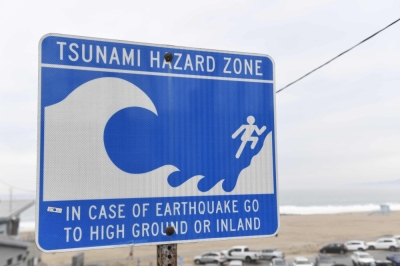Shanghai Braces for Nature’s Wrath: Over 280,000 Evacuated as Storm and Tsunami Scare Shake Eastern China
Shanghai, July 30 — A city that rarely sleeps found itself on edge today. Over 280,000 people were evacuated from their homes, hundreds of flights grounded, and ferry services suspended as Tropical Storm Co-May swept through eastern China, bringing lashing rains and strong winds that tested the resilience of millions.
The storm made landfall in Zhoushan, a port city in Zhejiang province, early Wednesday. Almost simultaneously, tremors from a powerful 8.8 magnitude earthquake off Russia’s Kamchatka Peninsula triggered tsunami warnings, adding to the region’s growing anxiety.
While authorities later lifted those tsunami alerts for Shanghai and Zhoushan, the early panic was real and deeply felt. Many feared the combination of storm surge and seismic activity could bring a crisis larger than expected.
Despite not being as fierce as a full-blown typhoon, Co-May wasn’t taken lightly. Shanghai’s two major airports, Pudong and Hongqiao, were heavily impacted. More than 640 flights were expected to be cancelled, and highways were limited to speeds below 60 kph for safety.
Rainfall predictions of up to 100mm in six hours—an entire month’s worth—prompted authorities to warn of urban waterlogging, especially near the heart of the city.
Ferries stopped. Trains slowed or suspended. Parks shut down. Even the usually vibrant Shanghai Zoo closed its doors. While Disneyland and Legoland remained open, they scaled back operations, cancelling rides and performances in response to the severe weather.
Airports in neighboring cities like Ningbo, Wenzhou, and Hangzhou were also caught in the crossfire, with hundreds of flights either delayed, diverted, or cancelled.
Shanghai, unlike many southern cities, rarely takes a direct hit from tropical cyclones. The last major one to slam the financial capital was Bebinca in 2023 — the strongest since 1949. Co-May made its presence known with sustained winds reaching 83 kph, and forecasters warned it could strike again closer to Shanghai by the end of the day.
In a moment that revealed the vulnerability of even the most advanced urban centers, the possibility of a double disaster — storm and tsunami — became an eerie reminder of nature’s unpredictable force.
By noon, however, Shanghai’s municipal earthquake agency downplayed earlier predictions of “disastrous impacts,” and marine experts confirmed that tidal waves, while rising as high as 180 cm in some areas, would remain within safe limits for the city itself.
Still, the city remains cautious. Public services are on high alert, emergency shelters are prepared, and residents are urged to stay indoors and informed.
In times like this, Shanghai’s people — its workers, responders, families, and leaders — are the real heartbeat of the city, showing that calm, cooperation, and community spirit are what hold us strong when the storm comes knocking.



